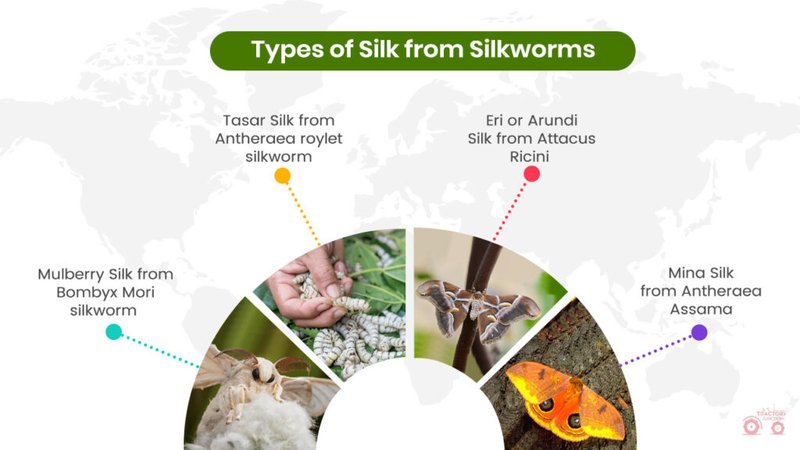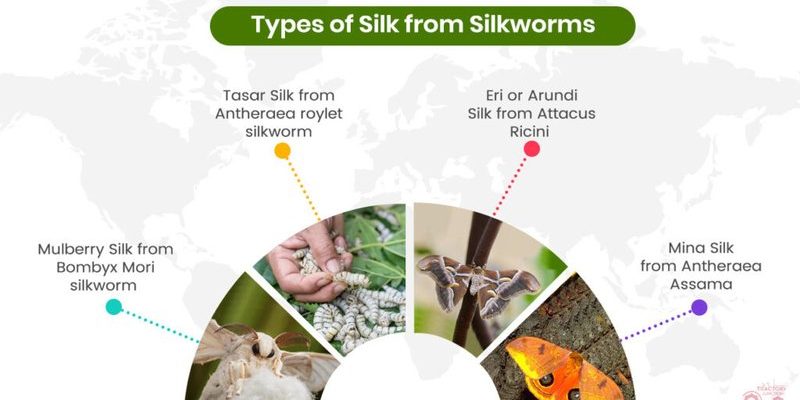
In this article, we’re diving into the world of silkworm waste and exploring its potential as an organic fertilizer. We’ll break down the science behind it, look at how it compares to traditional fertilizers, and share insightful tips on how to use it effectively in your garden. So grab a cup of coffee and let’s jump into the fascinating world of silkworm waste!
What Is Silkworm Waste?
Silkworm waste is essentially what’s left behind after these little critters have done their job of spinning silk from the mulberry leaves they eat. Once silkworms complete their life cycle, they produce droppings and leftover bits of silk and plant material. You might be wondering, “Why should I care about this waste?” Well, this organic matter is rich in nutrients that can benefit your garden significantly.
When it comes to gardening, the key to success often lies in the quality of the soil. Silkworm waste contains essential nutrients like nitrogen, phosphorus, and potassium, which are vital for plant growth. In fact, you could think of it as a garden’s multivitamin. By incorporating this waste into your soil, you’re not just discarding it; you’re enhancing your garden’s health and productivity.
The Nutritional Value of Silkworm Waste
One of the most interesting aspects of silkworm waste is its impressive nutritional profile. It’s packed with organic matter, which is crucial for soil fertility. Here’s how silkworm waste stands out:
- Nitrogen: This is a key nutrient that helps plants grow lush and green.
- Phosphorus: Important for root development and flower production, phosphorus ensures your plants not only grow but thrive.
- Potassium: This nutrient helps plants with hydration and overall resilience against diseases.
But that’s not all! Silkworm waste also contains beneficial microorganisms that can help improve soil structure and health. These microorganisms break down organic matter, leading to better nutrient availability for your plants. Let me explain it this way: when you add silkworm waste, you’re inviting nature’s little helpers to transform your soil into a thriving ecosystem.
Comparing Silkworm Waste to Traditional Fertilizers
So, how does silkworm waste stack up against traditional fertilizers? Here’s where things get really interesting. While traditional fertilizers can provide a quick nutrient boost, they often come with side effects like soil degradation and water pollution. On the other hand, silkworm waste is a natural, slow-release fertilizer that improves soil health over time.
Think of it like baking bread. Quick yeast may give you immediate results, but sourdough takes time to develop flavor and depth. Silkworm waste works similarly; it enriches the soil gradually, allowing your plants to absorb nutrients in a more sustainable way. Plus, it enhances soil structure, leading to better drainage and aeration—something chemical fertilizers typically can’t provide.
How to Use Silkworm Waste in Your Garden
Now that you’re sold on the benefits of silkworm waste, you might be wondering how to use it. Fortunately, incorporating it into your gardening routine is pretty straightforward. Here’s a simple guide:
1. **Collect the Waste**: If you have access to a silkworm farm or can purchase dried silkworm waste, gather what you need.
2. **Prepare Your Soil**: Before planting, mix the silkworm waste into your soil. Aim for a ratio of about 1 part silkworm waste to 3 parts soil.
3. **Top Dressing**: You can also apply it as a top dressing a few inches away from your plants to avoid direct contact, which can harm young roots.
By using these methods, you’re not just tossing in silkworm waste; you’re actively feeding your plants and nurturing your soil.
Potential Myths and Misconceptions
As with any gardening practice, there are plenty of myths surrounding silkworm waste. One common misconception is that it has an unpleasant odor. Honestly, when properly managed and dried, silkworm waste shouldn’t smell any worse than regular compost.
Another myth is that it’s only suitable for certain types of plants. In reality, silkworm waste works well with a variety of plants, from vegetables to ornamental flowers. However, you might want to test it on a small patch first, just to see how your specific plants react. After all, every garden is unique!
Environmental Benefits of Using Silkworm Waste
Using silkworm waste as fertilizer isn’t just good for your garden; it’s also a win for the environment. By opting for organic fertilizers like this, you’re reducing your reliance on chemical fertilizers that can harm ecosystems and contribute to water pollution.
Silkworm waste is a sustainable option that promotes biodiversity in your soil. It supports beneficial microorganisms, which helps maintain a healthy ecosystem. When you use natural fertilizers, you’re playing a part in the larger picture of protecting our planet. So, when you’re tending to your garden, you’re also helping to care for the world around you—talk about a win-win!
Final Thoughts on Silkworm Waste as Organic Fertilizer
So, what’s the bottom line? Is silkworm waste a myth or a fact? The evidence points strongly toward *fact.* This nutrient-rich organic material can enhance soil health and support plant growth, making it a fantastic addition to any gardening strategy.
By using silkworm waste, you’re not only promoting your garden’s vibrancy but also engaging in a sustainable practice that respects our planet. As you dig into your gardening routine, keep in mind the little silkworms and their waste—those tiny treasures can make a big difference in your green space. So get out there, mix that silkworm waste into your soil, and watch your plants flourish!

